I have this question.
for two table : first, is employee : Employee(id, roomID) and second is : Room(roomID, roomName)
The question is : How many employees work in each room.
I can do this easily in SQL Language :
select Room.roomID, COUNT(Employee.id) as NumofEmployee
from Employee, Room
where employee.roomID = Room.roomID
group by Room.roomID
The same question, but writing under Relational Algebra language. This question makes me headache so much, because I know in this language, just have some simple operation : join selection projection difference. So, many SQL command I don't know how to do with, for example : group by or count.
Thanks :)
